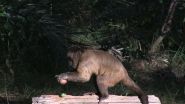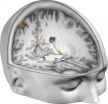(Press-News.org) Flowering plants, also known as angiosperms, add an allure to the world that is unlike anything else in nature, but more importantly, they sustain us. Most of the fruits, vegetables, grains, beans, nuts, and even herbs and spices that we consume are produced by flowering plants. They all belong to the green plant branch of the tree of life, and a novel DNA analysis software program named MarkerMiner facilitates identification of genes that can be used to elucidate the evolutionary relationships between them.
University of Florida (UF) biologist Srikar Chamala, working with UF Genetic Institute faculty Brad Barbazuk, Pamela Soltis, and Douglas Soltis, along with a team of researchers from the United States, Chile, and Belgium, designed MarkerMiner to facilitate greater progress in angiosperm phylogenetics. There are currently over 300,000 species of angiosperms, within which many finer evolutionary details are unknown. The software will help researchers discover genes useful for inferring evolutionary patterns within plants that appear superficially similar, by aiding close comparisons of their genes.
"MarkerMiner works by filtering through large amounts of assembled transcriptome sequence data [the gene-encoding portion of the genome] to identify single-copy nuclear loci, by making use of conserved low-copy nuclear gene information available from sequenced angiosperm genomes," explains Dr. Chamala, who led the study. "Because gene duplications are very frequent in angiosperms, the putative single-copy status of the genes targeted by MarkerMiner makes them great genetic markers for resolving angiosperm phylogenies."
Despite advances in DNA sequencing technology, analyzing genetic sequence data can be expensive, time-consuming, and a bottleneck for many researchers. MarkerMiner eliminates those constraints by providing an easy-to-use platform, which researchers across the globe with limited bioinformatics training and limited access to high-performance computing resources can leverage to produce phylogenetic markers for any angiosperm group of interest.
A full description of MarkerMiner is available in a recent issue of Applications in Plant Sciences (http://www.bioone.org/doi/pdf/10.3732/apps.1400115). The study includes a test in which hundreds of single-copy nuclear loci from four different flowering plant groups were successfully identified. A user manual including source code is publicly available at https://bitbucket.org/srikarchamala/markerminer.
Mohammad Vatanparast, a researcher at the Smithsonian Institution says, "I'm glad that I found MarkerMiner. I'm using it to pull up single-copy orthologous genes from transcriptomes to perform phylogenomic analysis across phaseoloid legumes, a group that contains important species like soybean and common bean. MarkerMiner has great potential to facilitate next-generation sequence research and makes locus selection a lot easier."
Norman A. Douglas, a researcher at Oberlin College, is using MarkerMiner to develop loci for multilocus phylogeography across diverse lineages of gypsum-endemic plants in the Chihuahuan Desert, located in Mexico and the southwestern United States.
"Our first effort took several months of work to identify likely orthologs of single-copy loci in lineages that have few genomic resources, like Nyctaginaceae, Boraginaceae, and some isolated genera in Asteraceae. MarkerMiner simplifies the process greatly, and provides output in several useful formats. I am confident that this pipeline will find wide use in the phylogeography community," says Douglas.
MarkerMiner could soon empower scientists worldwide by making angiosperm research in fields of study such as ecology, evolution, systematics, phylogeography, and population biology more efficient and economical.
INFORMATION:
Srikar Chamala, Nicolás García, Grant T. Godden, Vivek Krishnakumar, Ingrid E. Jordon-Thaden, Riet De Smet, W. Brad Barbazuk, Douglas E. Soltis, and Pamela S. Soltis. 2015. MarkerMiner 1.0: A new application for phylogenetic marker development using angiosperm transcriptomes. Applications in Plant Sciences 3: 1400115. doi:10.3732/apps.1400115.
Applications in Plant Sciences (APPS) is a monthly, peer-reviewed, open access journal focusing on new tools, technologies, and protocols in all areas of the plant sciences. It is published by the Botanical Society of America (http://www.botany.org), a nonprofit membership society with a mission to promote botany, the field of basic science dealing with the study and inquiry into the form, function, development, diversity, reproduction, evolution, and uses of plants and their interactions within the biosphere. APPS is available as part of BioOne's Open Access collection (http://www.bioone.org/loi/apps).
For further information, please contact the APPS staff at apps@botany.org.
Over the past 35 years, California's high-wage workers have seen steady increases in their paychecks. But low-wage workers, 4.8 million strong and about one-third of the state's workforce, earned less in inflation-adjusted dollars in 2014 than they did in 1979, according to an analysis from the University of California, Berkeley.
UC Berkeley researchers analyzing U.S. Census Bureau data at the campus's Center for Labor Research and Education found that low-wage workers, defined as those earning hourly wages of $13.63 or less, have seen steady declines in their inflation-adjusted ...
As the number of bills passed by Congress declines, fewer and fewer Congressional representatives are voting across party lines, leaving only a few key representatives as collaborative voters, according to researchers.
"We can't say for sure that the decline in cooperation is the sole reason that there are fewer bills being introduced or passed by Congress, but we do know the two are statistically correlated, and both have been dropping steadily over the past 60 years," said Clio Andris, lead author and assistant professor of geography at Penn State.
The researchers ...
China's government and other sources say that the country's carbon-dioxide emissions flattened out between 2013 and 2014. The leveling-off was a remarkable feat that could set the country on a course to beating its own goals for lowering emissions. But this optimistic outcome hinges on China overcoming some serious energy challenges, according to an article in Chemical & Engineering News (C&EN), the weekly newsmagazine of the American Chemical Society.
Steven Gibb, a senior editor at C&EN, reports that a number of factors could help explain the emissions plateau. China ...
How and when does mom feed her embryo? We humans, like most mammals, experience pregnancy where a mother supplies nutrition directly to the embryo as it develops. But we're in the minority.
Most members of the animal kingdom supply eggs with nutritious yolk before they are fertilized. With this yolk supply, fertilized eggs develop as embryos in the environment outside the mother's body. For over a century, the scientific understanding of matrotrophy ("mother-feeding") of an embryo developing inside a mom's body has come from vertebrate animals, especially mammals like ...
The latest Special Issue from ecancermedicalscience is dedicated to the memory of our late friend, Dr Mario Sideri.
The Special Issue, "Prevention of gynaecological cancers: in memory of Mario Sideri," consists of nine articles centred around Dr Sideri's favoured research topic.
Dr Sideri was one of the first doctors in the world to identify the connection between the human papillomavirus (HPV) and cervical cancer.
He served as the Director of the Preventive Gynecology Unit at the European Institute of Oncology (IEO) in Milan from 1994 until his tragic death in June ...
When it comes to cracking nuts, wild bearded capuchin monkeys are more skilled than anyone had given them credit for, according to researchers who report new findings in the Cell Press journal Current Biology on April 30.
The monkeys are known to use stone "hammers" to crack nuts. The new study shows that the monkeys are quite careful about the amount of force delivered to those nuts. They adjust the force applied with each strike based on the condition of the nutshell, making it less likely that they'll end up smashing the tasty kernel inside.
"Wild bearded capuchin ...
Bats are masters of flight in the night sky, capable of steep nosedives and sharp turns that put our best aircraft to shame. Although the role of echolocation in bats' impressive midair maneuvering has been extensively studied, the contribution of touch has been largely overlooked. A study published April 30 in Cell Reports shows, for the first time, that a unique array of sensory receptors in the wing provides feedback to a bat during flight. The findings also suggest that neurons in the bat brain respond to incoming airflow and touch signals, triggering rapid adjustments ...
Neuroscientists have perfected a chemical-genetic remote control for brain circuitry and behavior. This evolving technology can now sequentially switch the same neurons - and the behaviors they mediate - on-and-off in mice, say researchers funded by the National Institutes of Health. Such bidirectional control is pivotal for decoding the brain workings of complex behaviors. The findings are the first to be published from the first wave of NIH grants awarded last fall under the BRAIN Initiative.
"With its new push-pull control, this tool sharpens the cutting edge of ...
The feeling of being inside one's own body is not as self-evident as one might think. In a new study from Sweden's Karolinska Institutet, neuroscientists created an out-of-body illusion in participants placed inside a brain scanner. They then used the illusion to perceptually 'teleport' the participants to different locations in a room and show that the perceived location of the bodily self can be decoded from activity patterns in specific brain regions.
The sense of owning one's body and being located somewhere in space is so fundamental that we usually take it for granted. ...
First study to show pattern of telomere changes at multiple time points as cancer develops
Telomeres can look 15 years older in people developing cancer
Pattern suggests when cancer hijacks the cell's aging process
CHICAGO -- A distinct pattern in the changing length of blood telomeres, the protective end caps on our DNA strands, can predict cancer many years before actual diagnosis, according to a new study from Northwestern Medicine in collaboration with Harvard University.
The pattern -- a rapid shortening followed by a stabilization three or four years before ...


